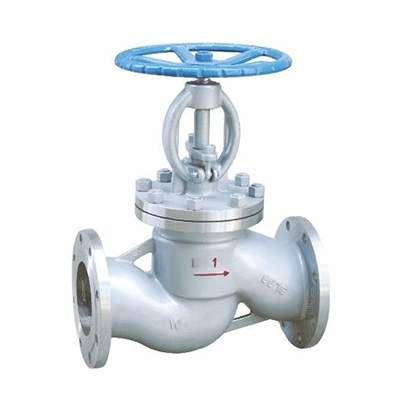Welcome to My Blog!
Before we dive into the content, if you’re interested in our products or have any questions, please feel free to visit our Contact Us page on the website. Our team is ready to assist you with inquiries, orders, or any support you may need.
Now, let’s get started on our journey together. I hope you find the content here insightful, engaging, and valuable.
What is a Stop Valve?

A stop valve is a crucial component in home plumbing systems, designed to control or completely shut off the flow of water in a specific pipe section. Unlike main water shut-off valves that control water flow to the entire house, stop valves allow for localized control. This is particularly useful for maintenance, repairs, or emergency situations, such as fixing a leaking faucet without turning off water to the rest of the home.
Stop valves differ from other types of valves, like gate valves and ball valves. While a gate valve gradually opens or closes, making it suitable for full-flow applications, a stop valve is optimized for quick shut-off and precise water control. This makes it ideal for fixtures like sinks, toilets, dishwashers, and washing machines.
Key Benefits of Stop Valves:
- Localized control of water flow
- Easy to operate in emergencies
- Protects plumbing systems from damage
- Compatible with most residential and commercial water systems
Types of Stop Valves
Choosing the right type of stop valve is essential for effective water management and long-term plumbing reliability. Here are the main types commonly used in homes:
Angle Stop Valve:
Angle stop valves are the most common in residential plumbing. They are installed where water pipes make a 90-degree turn, such as under sinks or toilets. They provide efficient shut-off and are easy to operate with a simple quarter-turn.
Straight Stop Valve:
Straight stop valves allow water to flow in a straight line. They are typically used in situations where the pipe does not require a directional change. Straight valves are often used for connecting appliances or inline plumbing segments.
Globe Stop Valve:
Globe valves provide precise control over water flow. They are commonly used in applications where accurate flow adjustment is necessary, such as certain industrial or laboratory setups. While not as common in residential plumbing, they are highly effective for high-pressure or specialized systems.
Ball Stop Valve:
Ball valves use a rotating ball to control water flow and provide a quarter-turn shut-off mechanism. They are extremely durable, easy to operate, and ideal for emergency shut-offs. Ball stop valves are especially useful in high-pressure systems.
Specialty Stop Valves:
Specialty valves are designed for industrial applications, high-pressure water systems, or gas lines. They often feature enhanced materials and precision engineering to ensure safety and durability.
Materials Used in Stop Valves
The material of a stop valve affects its durability, corrosion resistance, and suitability for specific applications:
Brass Stop Valve:
Brass is the most commonly used material for residential stop valves. It is corrosion-resistant, durable, and compatible with most plumbing systems. Brass valves are ideal for both hot and cold water applications.
Stainless Steel Stop Valve:
Stainless steel offers superior corrosion resistance, especially in outdoor or industrial environments. It is suitable for high-pressure systems and long-term durability, although it is typically more expensive than brass.
Plastic Stop Valve:
Plastic valves are lightweight, easy to install, and cost-effective. They are best suited for low-pressure applications or temporary installations. However, they are less durable than metal valves and may not be ideal for long-term home plumbing.
How to Choose the Right Stop Valve for Your Home
Selecting the right stop valve involves several key considerations:
Pipe Size and Compatibility:
Ensure the valve matches the diameter of your existing plumbing pipes. Most residential stop valves fit standard pipe sizes, but it’s important to verify before purchase.
Water Pressure:
Some valves are designed to handle higher pressure, while others are suitable for standard home water systems. Choosing the correct valve ensures safety and prevents leaks.
Material and Durability:
Brass is recommended for most home applications due to its balance of cost, durability, and corrosion resistance. Stainless steel is ideal for harsh or outdoor environments.
Application:
Angle valves are perfect for toilets and sinks, while straight valves work for direct water lines. Consider the valve’s location and functionality before purchasing.
Brand and Quality:
High-quality brands like Honeywell, Apollo, and Danfoss are trusted for their performance and warranties. Avoid low-quality valves, as they may fail prematurely, causing leaks and damage.
How to Install a Stop Valve
Installing a stop valve is straightforward if done carefully:
- Turn Off the Main Water Supply: Prevents accidental flooding during installation.
- Measure and Prepare the Pipe: Ensure the pipe end is clean, smooth, and correctly sized for the valve.
- Use Proper Tools: Wrenches, Teflon tape, pipe cutters, and safety gloves are essential.
- Install the Valve Securely: Wrap the threaded connections with Teflon tape and tighten appropriately—avoid over-tightening to prevent damage.
- Test the Valve: Turn the water back on slowly and check for leaks. Operate the valve multiple times to ensure smooth functionality.
Pro Tip: Angle valves are often easier to install under sinks, while straight valves require precise alignment with the pipe. Always follow manufacturer instructions for the best results.
Stop Valve Maintenance and Troubleshooting
Regular maintenance extends the life of your stop valves and prevents common problems:
- Check for Leaks: Inspect connections periodically, especially after installation or seasonal changes.
- Operate Valves Regularly: Turning them on and off prevents stiffness and ensures functionality.
- Clean and Lubricate: Some valves benefit from light lubrication to maintain smooth operation.
Common Issues:
- Leaks due to worn washers or corrosion
- Stiff or stuck valves
- Noise caused by high water pressure
- Freezing in cold climates
Replacing a damaged valve promptly is important to prevent water damage and maintain system efficiency.
Buying Guide for Stop Valves

When purchasing a stop valve, consider the following:
- Application: Choose the valve type based on its intended use—angle valves for sinks, straight valves for direct lines.
- Material: Brass and stainless steel are preferred for durability and long-term use.
- Brands and Reliability: Trusted brands often provide warranties and better quality control.
- Where to Buy: Online marketplaces and local plumbing supply stores offer a wide range of options. Check specifications carefully to ensure compatibility with your plumbing system.
Price Consideration: While cheaper valves may save money upfront, investing in high-quality valves reduces the risk of leaks and replacements over time.
Conclusion
Choosing the right stop valve is critical for efficient, safe, and reliable home plumbing. Understanding the different types, materials, and installation practices helps homeowners prevent leaks, reduce maintenance, and improve water control. By selecting high-quality valves and performing regular maintenance, you can ensure your plumbing system operates smoothly for years to come.
FAQ
What is a stop valve used for?
A stop valve controls water flow to individual fixtures, allowing maintenance or repairs without shutting off the main water supply.
How do I know which stop valve is right for my home?
Consider the valve type (angle or straight), pipe size, water pressure, and material. Brass valves are commonly used for durability and reliability.
Can I install a stop valve myself?
Yes, simple installations are possible with basic plumbing tools, but professional help is recommended for complex or high-pressure systems.
Why is my stop valve leaking?
Leaks are usually caused by worn washers, corrosion, or loose connections. Regular maintenance and proper installation can prevent most leaks.
How often should I check my stop valve?
Inspect stop valves at least once a year, and test their operation to ensure they open and close smoothly without leaks.
Need Help Choosing the Right Stop Valve?
If you’re unsure about which stop valve is best for your home or plumbing system, our experts are here to help. Contact us today for a personalized consultation, and ensure your water control system is safe, efficient, and long-lasting. Don’t wait until a leak or malfunction occurs—get in touch now to protect your home and your plumbing!
